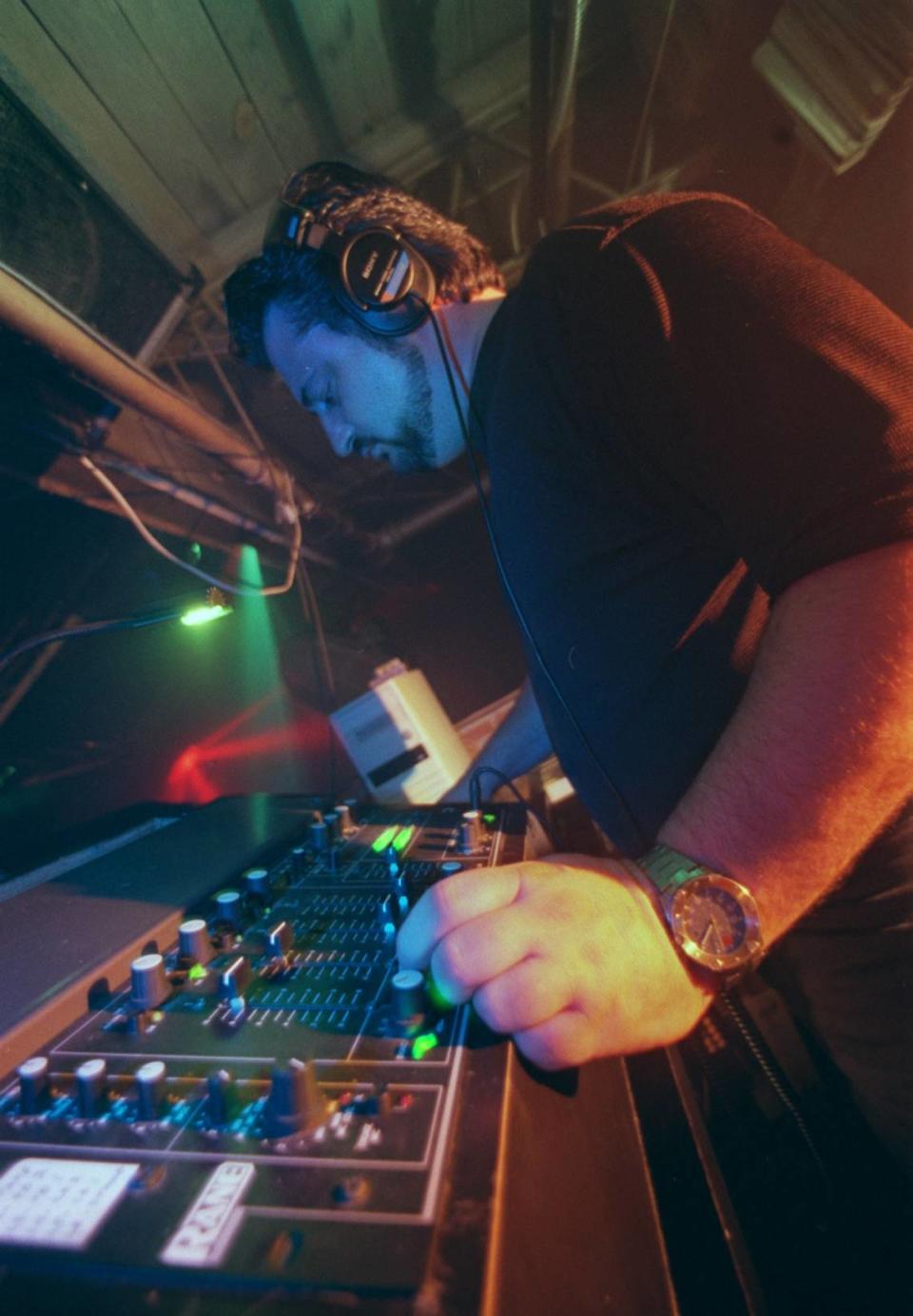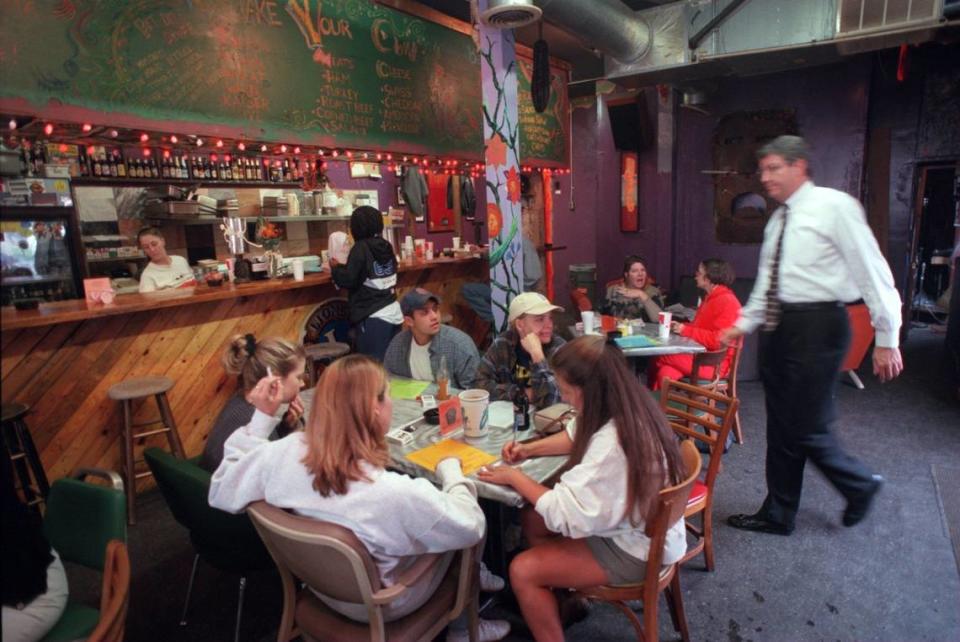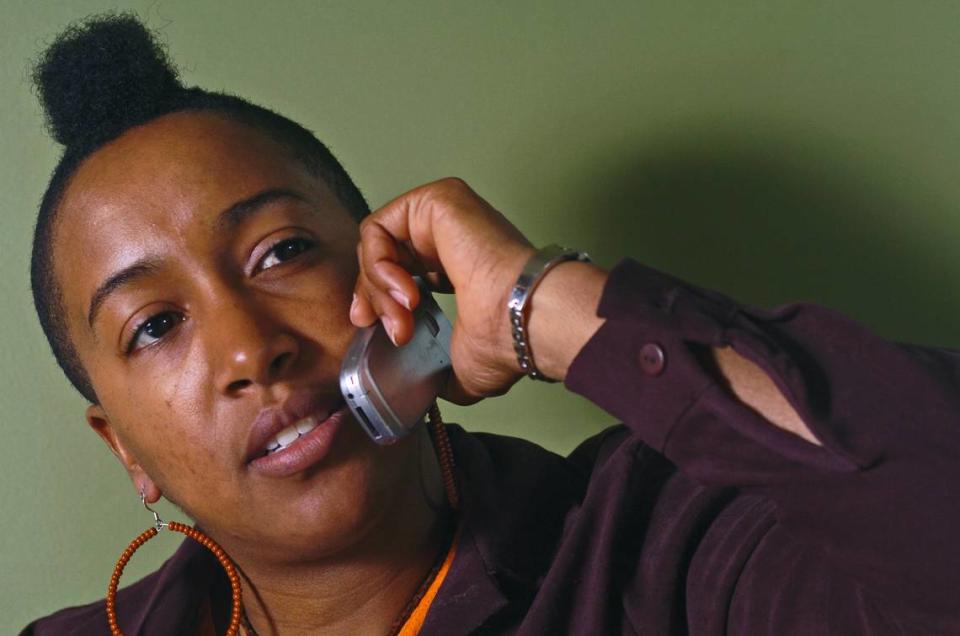Paid to Party: What was it like covering Charlotte nightlife in the ’90s and early 2000s?
Tonya Jameson wrote Paid to Party nightlife column in the 1990s and early ‘00s as part of her coverage of pop culture for The Charlotte Observer. She examined the intersection of race and culture through the city entertainment scene.
A crowd singing “Sweet Caroline” rang out from Olde Mecklenburg Brewery on a Saturday night not too long ago.
I didn’t expect to hear the Neil Diamond party song at Mecktoberfest, held earlier this season, but I didn’t care — I walked through the gates singing at the top of my lungs. My girlfriend looked at me like I was crazy (typical), but that song always brings me back to my days as a pop culture columnist for the Charlotte Observer. I can’t recall the number of times I sang it as the “Paid to Party” columnist.
Sitting at OMB, I marveled at how much nightlife has changed since I moved here in the mid ‘90s. Think about it. A week before that Saturday, we chose between Festival in the Park, Festival of India, International Arts Festival and Mecktoberfest. All on the same day!!
When I moved here, the most notable festivals were WestFest, CityFest, Yiasou Greek Festival and Speed Street. Over the years, I’ve watched with admiration and a tinge of melancholy as Charlotte grew into a nightlife destination.
There are more options, but the pioneers who worked to create nightlife here decades ago have primarily been forgotten. It’s tough to write about the transformation without exploring live music bars like Double Door Inn, promoters who rented any and everything to give us a place to party or how spoken word grew into a behemoth from its humble origins first at the Moon Room (now Bernardin’s) and later Wine Up (now Salud Cerveceria), but that’s another batch of columns.
In the ‘90s, bars and clubs were in random places in town. They’re still spread out now, but in trendy areas. Back then, they weren’t.
Scorpio only recently closed its location on Freedom Drive, but back then The Pterodactyl was a neighbor. (It’s now a Seven Eleven.)
Amos’ was on Park Road (now an ABC store), and it’s now Amos’ Southend.
There was the Baha Club. I think it was way down on South Tryon in what would be considered LoSo now (Editor’s note: She’s right). It was the boonies back then.
And there was a hodge podge of Black clubs along Independence Boulevard. (I once hung out with OJ Simpson at Club H20 — now a pool store or something.)
My Paid to Party Days started with Mythos, the gay-friendly (it was just gay back then) nightclub on College Street. Mythos sparked an entertainment district in the alley between College Street and the 7th Street parking deck. It also sparked nightlife uptown. In those days, my Observer colleagues reminisced Charlotte hosting the NCAA Final Four in 1994, and empty buildings were turned into nightspots.
Rick and Noah Lazes tried to spark some life uptown back then. They had CityFair, which eventually gave way to Hearst Tower, now Truist Center. CityFair had an aspiring Underground Atlanta vibe with Fat Tuesday. (I wonder if Noah still has the giant globe!)
Still, nothing transformed nightlife like Mythos. It opened in 1993 as big-city club in an uptown few dared visit at night. There was a downstairs VIP area, a lounge in the back, a stage, dance platforms and a big dance floor. DJs like Frankie Knuckles, Roger Sanchez, Afrika Bambaataa and Grandmaster Flash played there. Celebrities like Cyndi Lauper, Bill Maher and RuPaul came there, too. Prince was supposed to be there one night after a concert, but I never saw him. Oh yeah, and in later years, former presidential candidate John Edwards hosted an event at Mythos’ successor, The Forum. So weird.

Its success led to more clubs in the alley: Bar Charlotte and Have A Nice Day Cafe, then Dixie’s Tavern over on 7th Street, now WFAE’s community engagement center. As Mythos transformed College Street, an Irish ownership group led by Tommy Timmins set about changing Fifth Street. After Timmins opened Tyber Creek Pub in Dilworth, he and his partners opened Connolly’s on Fifth Street. It had a line out the door every weekend.
What was happening? Irish bars only had a line on St. Patrick’s Day!
Connolly’s led to the development of more bars along Fifth and Tryon. And more nearby like HOM, now Tequila House.
Nightlife exploded uptown, especially with the addition of the EpiCentre, but other areas grew, too. NoDa used to only be Wine Up, the Neighborhood Theatre, Evening Muse and my beloved Fat City Deli, now Fat City Lofts. Yep, a deli with the best sandwiches and late night vibes with DJs, bands and poets.

I can’t reminisce about my P2P days without mentioning DJs like Smitty, D.R., Stacey Blackmon and Johnny Davis. Their music was a crucial part of the vibe. They played music they loved, not radio hits. Sssh, Mythos founder and now restaurant owner Andy Kastanas has a deep House music and Prince collection.
The music helped us get lost in those moments away from work (well, it was work for me — kinda), family and whatever troubles plagued us.
What strikes me most about that time is that the club scene became my family. Every place I went was like Cheers.
I met my homie Mike Kitchen (Kitch) DJing at Tonic lounge (demolished in the CPCC uptown expansion). He introduced me to one of my besties, Larken Egleston, at a DJ Jazzy Jeff (I think) show at Amos’ Southend. All three of us and others basically lived at Tempo nightclub, now Amnesia Nightclub, nearly every weekend. Many of our late nights ended there, and I can’t recall all of the celebrities who ended their nights there, too, like Dave Chappelle.
We were all in it together. Pioneer owners opened clubs and bars in places that most thought would fail and with concepts no one thought it would work. And we came anyway. They gave DJs a place to spin and created a vibe that we were all figuring out this insecure town together. And we were. The clubs gave us a place to connect often with the other transplants that called Charlotte home.

Thoughts from readers
Editor’s note: CharlotteFive recently asked readers to talk about nightlife in the ‘90s and early ‘00s. What a few of you wrote:
“There was such a sense of new-ness and innocence back then in all of these clubs. Charlotte was an adolescent upstart, filled with adolescent upstarts and newbies to the city, like me (since 1994). Drugs were scarce, but weren’t going to kill you if you were even able to find them. I could be accused of looking at our small but super-fun club scene through rose colored glasses, but I’m not. Those really were the good ol’ days.” — Craig Jackson, Gen X.
“The ‘90s and 2000s were all about coming together for the latest music and finding people of similar vibes to party to let loose with. You definitely knew where in Charlotte your go-to places were, and what nights were best.” — Jason Hartigan, Gen X.
“Back then we just had a better time. We had places we went to each week on a designated night. Saw the same faces and never worried about too much happening.” — Elaine Guy, Gen X. “So much more fun. Dancing was the ultimate goal each trip out. We sweated out soooo many hairdos we had just gotten at the clubs on the weekend.”
“You didn’t have a care in the world, in college, not many responsibilities. So at the time, we were living our best life — just ‘Live your Life’ TI & Rihanna song from early 2000s that was played at every club in Charlotte at the time.” — Ali Amigoni, millennial. “You’d be single (more than likely) and you’d just get ready with your college girls and dance until you felt like you had just jumped in the pool.”

